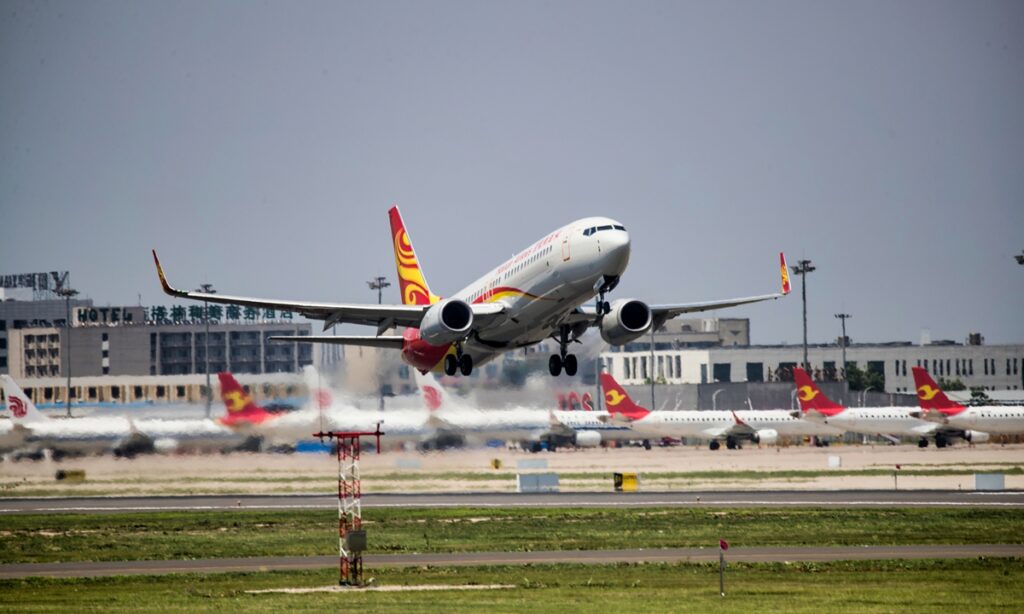China’s aviation industry has shown signs of recovery in the second quarter, as recent data show that the industry has narrowed its losses from the previous quarter’s record losses.
The industry lost 34.25 billion yuan ($4.9 billion) in the second quarter, 3.85 billion yuan less than in the first quarter, Jin Junhao, an official from the Civil Aviation Administration of China (CAAC), said on Friday.
In comparison, three major carriers, Air China, China Southern Airlines and China Eastern Airlines, had revenues totalling 197.3 billion yuan in the first half of 2019, all of which achieved positive growth. And the net profit attributable to shareholders of listed companies was 6.77 billion yuan.
He attributed the improved figures to the country’s gradual return to normal, as the country’s COVID-19 control and prevention measures have been making strong progress.
Cargo transport has also played an important role in the recovery, as the June figures were bigger than before the virus outbreak.
The Chinese airline industry was badly hit by the epidemic. The industry lost 24.5 billion yuan in February, including 20.96 billion yuan for various carriers, the largest ever recorded.
However, their performance has been improving. In June, domestic and international routes reached 65.9 percent and 42.1 percent, respectively, of the same period last year, CAAC data showed.
China Southern Airlines said its flights between major cities have resumed, and has flown 1,310 flights a day on average since June. That’s about 70 percent of flights it operated the same time last year. The airline expects its traffic in the third quarter to further jump to about 76 percent of last year’s level.
A number of foreign airlines, including United, Lufthansa and Air France, have restarted flights to China, with some overseas airlines not limited to flying to one city.
But insiders remain pessimistic about the market, as the industry lost more than 70 billion yuan in the first half of the year, which is “very astonishing.” That’s nearly 20 times the 2003 amount, when China suffered from SARS.
The summer market looks bleak, as sporadic outbreaks have stifled travel demand, and the suspension of most international routes has also harmed the airlines’ income, market watcher Lin Zhijie told the Global Times Friday.
“It may be profitable per month, but it won’t make a few dollars,” he said.
China’s carriers posted a 49.9 percent year-on-year decline in traffic in May, a significant improvement from the 64.6 percent demand drop in April. However, the improvement was recently interrupted by flight cancellations to and from the latest outbreak in Beijing, the International Air Transport Association said.
File photo:VCG




